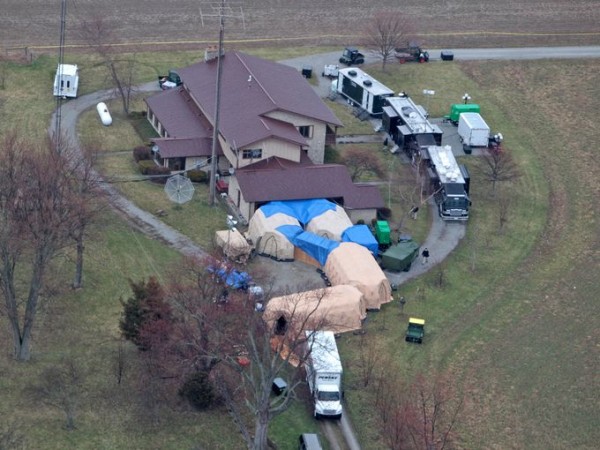Why is it OK for corrupt government agencies to invade someone’s home and go through their personal things, without hard evidence?

Corrupt FBI Invades 91 Yr Old Man’s Home to “Inspect” (Then Steal) Life-Long Collection of American Indian Artifacts
The answer is “It’s not OK”, but obviously there are people in our government that wanted to get their hands on the man’s collection, and the cheapest and easiest way to steal the man’s life-long collection was to use the FBI to go seize everything the want.
“I have never seen a collection like this in my life except in some of the largest museums.”
Looks like they are all very impressed by the man’s American Indian artifact collection that he spent 80+ years collecting. So instead of working with the owner of the Indian artifacts collection, the government just decided to take over the owner’s house and property, and going through every piece in his collection “to determine whether some of the items might be illegal to possess privately”.
So, the government has made the determination that they can sift through 8 decades of this man’s life and collections, in the mere hopes that they might find something that would allow them to steal the 91 year old man’s life-long collection.
I will tell you what will most likely happen (unless the public stand up for this man).
The corrupt Obama FBI will confiscate many items from the collection, claiming some problem with the items. The FBI will hold onto the items past the death of the 91 year old man, so the collector may never again get to enjoy the special items he spent a lifetime collecting.
FBI agents Wednesday seized “thousands” of cultural artifacts, including American Indian items, from the private collection of a 91-year-old Rush County man who had acquired them over the past eight decades.
An FBI command vehicle and several tents were spotted at the property in rural Waldron, about 35 miles southeast of Indianapolis.
The man, Don Miller, has not been arrested or charged.
Robert A. Jones, special agent in charge of the Indianapolis FBI office, would not say at a news conference specifically why the investigation was initiated, but he did say the FBI had information about Miller’s collection and acted on it by deploying its art crime team.
FBI agents are working with art experts and museum curators, and neither they nor Jones would describe a single artifact involved in the investigation, but it is a massive collection. Jones added that cataloging of all of the items found will take longer than “weeks or months.”
“Frankly, overwhelmed,” is how Larry Zimmerman, professor of anthropology and museum studies at Indiana University-Purdue University Indianapolis described his reaction. “I have never seen a collection like this in my life except in some of the largest museums.”
MORE: Focus of FBI probe is Indiana man of mystery.
The monetary value of the items and relics has not been determined, Jones said, but the cultural value is beyond measure. In addition to American Indian objects, the collection includes items from China, Russia, Peru, Haiti, Australia and New Guinea, he said.
The items were found in a main residence, in which Miller lives; a second, unoccupied residence on the property; and in several outbuildings, Jones said. The town originally was Iroquois land.
The objects were not stored to museum standards, Jones said, but it was apparent Miller had made an effort to maintain them well.
The aim of the investigation is to determine what each artifact is, where it came from and how Miller obtained it, Jones said, to determine whether some of the items might be illegal to possess privately.
Jones acknowledged that Miller might have acquired some of the items before the passage of U.S. laws or treaties prohibited their sale or purchase.
In addition, the investigation could result in the “repatriation” of any of the cultural items, Jones said.
Dark Rain Thom, a Shawnee descendant who served on the Indiana Native American Indian Affairs Commission under three governors, said the motives of such collectors vary, and that it’s not uncommon for collections to come to light when an elderly person dies and descendants try to figure out what to do with artifacts.
Often, she said, family members then quietly donate them to museums or arrange to return them to specific tribes — if that provenance can be determined.
Some collectors are motivated by money, as the artifacts’ sale can be lucrative, Thom said. But others with interests in archaeology or anthropology are motivated by a desire to understand the development of a culture through its art items and everyday implements. And others, Thom said, are in it for the thrill of discovery.
The FBI and its partners might have a daunting task determining the origins and provenance of all of the items, Thom predicted.
“It may be 30 years — or never — before they have it all cataloged.”
Stand Up To Government Corruption and Hypocrisy – usbacklash.org
